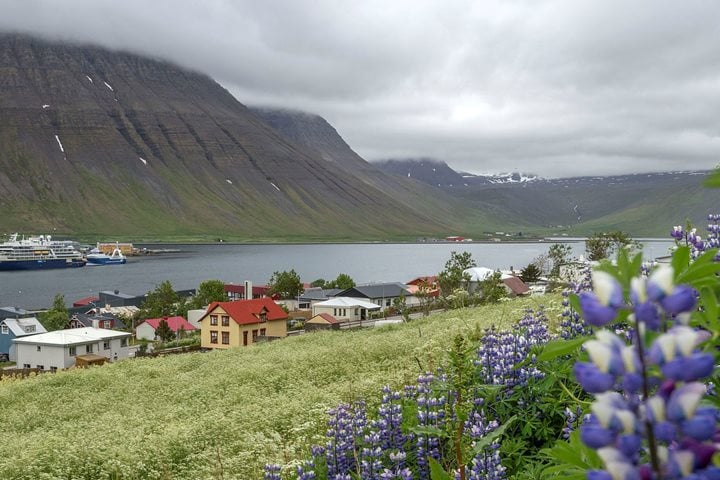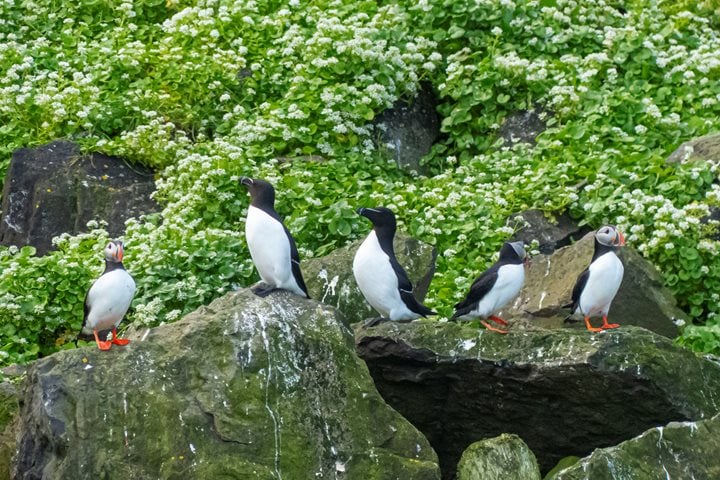Today, we finally reached Jan Mayen, a remote island nestled in the vast Atlantic Ocean. Situated approximately 500 kilometers northeast of Iceland, 950 kilometers east of Greenland, 600 kilometers northwest of Svalbard, and about 1000 kilometers west of mainland Norway, Jan Mayen remains largely inaccessible to most. Visitation is restricted primarily to military personnel and authorized civilian scientists, with no commercial flights available and private visits requiring special permissions from Norwegian authorities.
The weather greeted us with calm winds, and the sky, adorned with beautifully swirling clouds, added a mysterious allure to this very remote location. Though not entirely clear, the absence of fog provided us with good visibility as we embarked on several exhilarating hikes across the island.
The cliffs teemed with seabirds in their breeding season—fulmars, puffins, guillemots, and little auks—painting the black volcanic rocks with vibrant splashes of life. As we ventured further, we were awestruck by the majestic sight of Beerenbergm (the highest volcano on Jan Mayen at 2277 meters) capped with snow. The volcanic terrain, draped in a blanket of black ash that stretched to the ocean's edge, contrasted starkly with the occasional patches of resilient green vegetation. It was a landscape of raw beauty and geological wonder set in this remote and pristine environment.
After a morning filled with exploration, we reluctantly bid farewell to Jan Mayen, boarding National Geographic Resolution to set sail towards Greenland. Today's experience was a testament to the island's unique allure and its isolated, rugged ecosystem.







